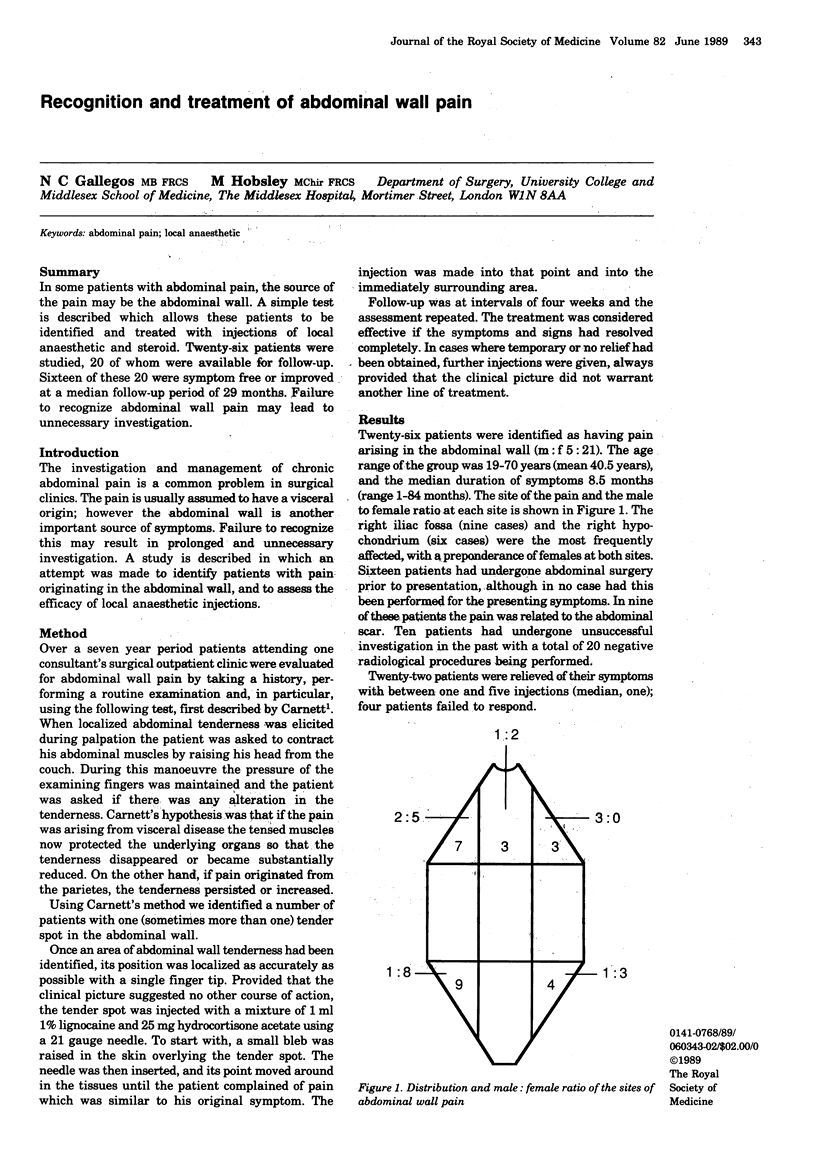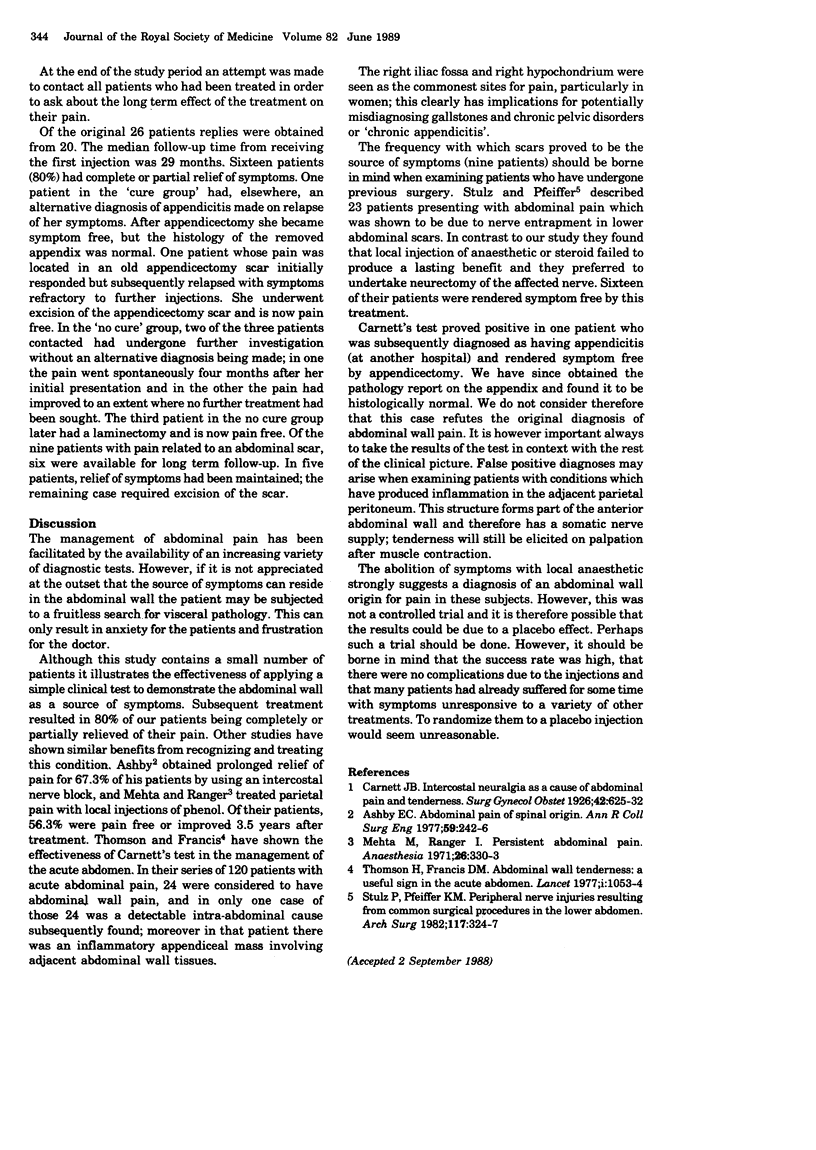Abstract
In some patients with abdominal pain, the source of the pain may be the abdominal wall. A simple test is described which allows these patients to be identified and treated with injections of local anaesthetic and steroid. Twenty-six patients were studied, 20 of whom were available for follow-up. Sixteen of these 20 were symptom free or improved at a median follow-up period of 29 months. Failure to recognize abdominal wall pain may lead to unnecessary investigation.
Full text
PDF

Selected References
These references are in PubMed. This may not be the complete list of references from this article.
- Ashby E. C. Abdominal pain of spinal origin. Value of intercostal block. Ann R Coll Surg Engl. 1977 May;59(3):242–246. [PMC free article] [PubMed] [Google Scholar]
- Mehta M., Ranger I. Persistent abdominal pain. Treatment by nerve block. Anaesthesia. 1971 Jul;26(3):330–333. doi: 10.1111/j.1365-2044.1971.tb04794.x. [DOI] [PubMed] [Google Scholar]
- Stulz P., Pfeiffer K. M. Peripheral nerve injuries resulting from common surgical procedures in the lower portion of the abdomen. Arch Surg. 1982 Mar;117(3):324–327. doi: 10.1001/archsurg.1982.01380270042009. [DOI] [PubMed] [Google Scholar]
- Thomson H., Francis D. M. Abdominal-wall tenderness: A useful sign in the acute abdomen. Lancet. 1977 Nov 19;2(8047):1053–1054. doi: 10.1016/s0140-6736(77)91885-2. [DOI] [PubMed] [Google Scholar]


